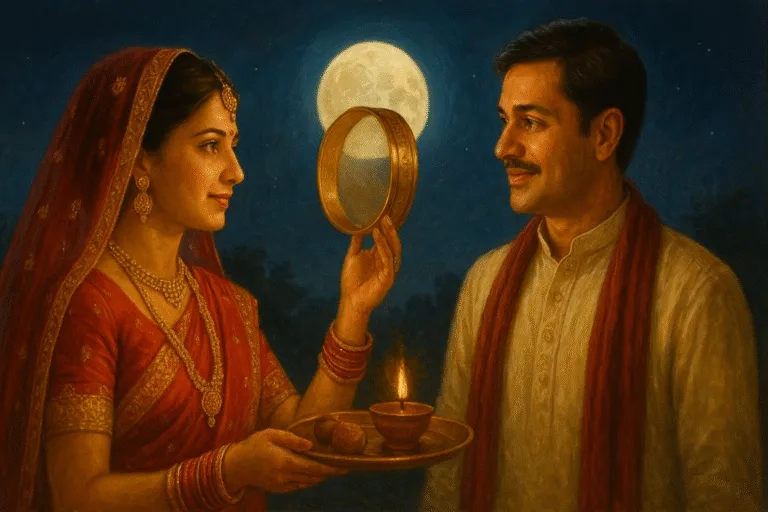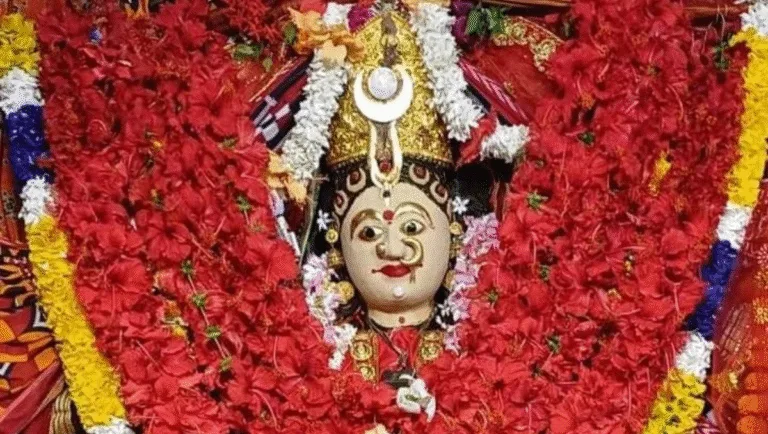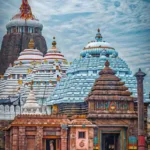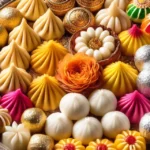The month of Sawan, also known as Shravan, holds a special place in the hearts of Hindus, marking a period of intense devotion, spiritual purification, and the celebration of nature’s renewal with the advent of the monsoon. Among the most significant observances during this holy month is the Sawan Somvar Vrat, a fast kept on Mondays to honor Lord Shiva. This ancient practice is steeped in mythology, tradition, and profound spiritual benefits, attracting millions of devotees who seek divine blessings for a prosperous, happy, and harmonious life.
This comprehensive guide delves deep into the world of Sawan Somvar Vrat, exploring its history, rituals, benefits, and answering frequently asked questions to provide a complete understanding of this sacred observance.
The Significance of Sawan and Mondays
The entire month of Sawan is dedicated to Lord Shiva, but Mondays (Somvar) are considered particularly auspicious. Monday is traditionally believed to be Lord Shiva’s favorite day, making any form of worship or austerity performed on this day highly potent. The convergence of his favorite day with his favorite month creates a period of immense spiritual energy, where it is believed that the divine is more accessible to the prayers of the faithful.
The origins of Sawan’s sanctity are deeply rooted in Hindu mythology, most notably in the episode of the Samudra Manthan (the churning of the cosmic ocean). According to the scriptures, a deadly poison called Halahala emerged from the ocean, threatening to annihilate the universe. To save all of creation, Lord Shiva consumed this poison and held it in his throat, which turned blue, earning him the name Neelkanth (the one with the blue throat).
This great act of compassion and sacrifice is believed to have occurred in the month of Shravan.To soothe the intense heat and burning sensation from the poison, the gods and devotees began offering cool elements like water and milk to Lord Shiva, a practice that forms the cornerstone of Sawan rituals today.
Sawan Somvar Vrat 2025: Mark Your Calendars
The dates for the Sawan month vary based on the lunar calendars followed in different regions of India. The Purnimanta calendar, followed in North India, and the Amanta calendar, used in South and Western India, have different start dates.
For North India (Rajasthan, Uttar Pradesh, Madhya Pradesh, Punjab, Himachal Pradesh, etc.):
- Sawan Begins: Tuesday, July 8, 2025
- Sawan Ends: Wednesday, August 6, 2025
- First Sawan Somvar: July 14, 2025
- Second Sawan Somvar: July 21, 2025
- Third Sawan Somvar: July 28, 2025
- Fourth Sawan Somvar: August 4, 2025
For South and West India (Andhra Pradesh, Telangana, Maharashtra, Gujarat, Karnataka, etc.):
- Sawan Begins: Thursday, July 24, 2025
- Sawan Ends: Friday, August 22, 2025
- Sawan Somvar Dates: July 28, August 4, August 11, August 18, 2025
The Legends and Stories (Vrat Katha)
The observance of Sawan Somvar Vrat is often accompanied by the narration of specific tales, or Vrat Kathas, that highlight the power of devotion to Lord Shiva.
One popular story is that of a poor Brahmin couple who were ardent devotees of Lord Shiva. Despite their unwavering faith, they were childless. Pleased with their sincere fasting and prayers during Sawan, Lord Shiva appeared before them and blessed them with a son. This tale reinforces the belief that sincere observance of the vrat can lead to the fulfillment of heartfelt wishes.
Another well-known katha involves a wealthy moneylender who had all worldly possessions but was deeply saddened by his lack of a son. He and his wife observed the Monday fasts with great devotion. Pleased, Lord Shiva granted them a son but with a condition: the boy would only live for 12 years. The boy grew up to be a devout follower of Shiva. As he neared his 12th year, his parents sent him to his maternal uncle’s house.
On his way, he was married to a princess under unusual circumstances. On the night of his 12th birthday, he passed away. However, seeing the immense grief and the boy’s own past devotion, Lord Shiva and Goddess Parvati restored him to life.This story underscores the belief that the vrat can even avert untimely death and bestow longevity.
For unmarried women, the inspiration comes from Goddess Parvati herself, who is said to have undertaken severe penance and fasts to win Lord Shiva as her husband. Unmarried women observe the Sawan Somvar Vrat in the hope of being blessed with an ideal life partner, much like Goddess Parvati was.
A Step-by-Step Guide to Observing the Sawan Somvar Vrat
The Sawan Somvar Vrat is a spiritual discipline that involves more than just abstaining from food. It is a day of prayer, meditation, and self-purification.
1. The Sankalpa (Vow):
On the first Monday of Sawan, or on each Monday, the devotee should begin the day by taking a Sankalpa—a solemn vow to observe the fast with sincerity and devotion, seeking Lord Shiva’s blessings.
2. Morning Rituals:
- Wake up early, preferably during the Brahma Muhurta (the auspicious time before sunrise).
- Take a holy bath.
- Wear clean, fresh clothes. White is considered Lord Shiva’s favorite color and is often preferred.
- Clean the puja area in the house and sprinkle it with Gangajal (holy water from the Ganges) if available.
3. Puja Vidhi (Worship Procedure):
Whether at a temple or at home, the worship of Lord Shiva is the central part of the day.
- Puja Samagri (Worship Items): Gather items like water (preferably Gangajal), raw cow’s milk, curd, ghee, honey, and sugar to make Panchamrit. Also, collect Bilva (Bel) leaves, Dhatura fruit and flower, white flowers, sandalwood paste, incense sticks (dhoop), an earthen lamp (diya) with ghee, fruits, and sweets (prasad).
- Abhishekam: The ritual bathing of the Shivling is a key ritual. Begin by pouring water, followed by the Panchamrit mixture or its individual components. As you pour, chant “Om Namah Shivaya”.
- Offerings: After the Abhishekam, adorn the Shivling with sandalwood paste. Offer Bilva leaves, which are very dear to Lord Shiva, along with Dhatura and white flowers.
- Mantra Chanting: Light the diya and incense sticks. Chant powerful Shiva mantras such as “Om Namah Shivaya” and the Maha Mrityunjaya Mantra. Reciting the Shiva Chalisa or other hymns is also highly beneficial.
- Katha and Aarti: Read or listen to the Sawan Somvar Vrat Katha. Conclude the puja by singing the Shiva Aarti and ringing a bell.
- Prasad: Distribute the offered fruits and sweets as prasad to family members.
4. Fasting Rules:
The nature of the fast can vary depending on individual health and capacity.
- Nirjala Vrat: The strictest form, involving no food or water. This should only be undertaken by those who are physically fit.
- Phalahar Vrat: The most common form, where devotees consume fruits, milk, and other vrat-specific foods.
- One-Meal Vrat: Some people eat one sattvic meal after the evening puja.
5. Breaking the Fast:
The fast is typically broken after sunset, following the evening puja and aarti.
Permitted Foods and What to Avoid
Maintaining purity in diet is crucial during the vrat.
Foods to Eat:
- Fruits: All seasonal fruits like bananas, apples, papayas, and watermelon are excellent.
- Vrat Flours: Use flours like Kuttu (buckwheat), Singhara (water chestnut), or Rajgira (amaranth) to make puris or rotis.
- Sabudana (Sago): A popular choice for making khichdi, vada, or kheer.
- Vegetables: Potatoes, sweet potatoes, yams, and bottle gourd are generally allowed.
- Dairy Products: Milk, curd, paneer, and buttermilk can be consumed.
- Spices: Use Sendha Namak (rock salt) instead of regular table salt.Cumin seeds and black pepper are also permitted.
- Beverages: Stay hydrated with water, coconut water, and fresh juices.
Foods to Avoid:
- Grains and Lentils: Wheat, rice, and all types of dals are strictly avoided.
- Onion and Garlic: These are considered tamasic and are prohibited.
- Non-vegetarian Food: Meat, fish, and eggs are completely forbidden.
- Alcohol and Tobacco: These substances must be abstained from.
- Certain Spices: Regular salt, turmeric, and other ‘heavy’ spices are avoided.
The Manifold Benefits of Sawan Somvar Vrat
Observing the Sawan Somvar Vrat is believed to bestow numerous spiritual and worldly benefits upon the devotee.
- Fulfillment of Wishes: It is a strong belief that Lord Shiva grants the heartfelt desires of those who fast with sincerity.
- Marital Harmony: For unmarried women, it is believed to help in finding a suitable and ideal husband. For married women, it is observed for the well-being, longevity, and prosperity of their husbands and for a harmonious married life.
- Spiritual Growth: The practice of fasting and devotion helps in purifying the mind, body, and soul. It cultivates discipline, self-control, and inner peace.
- Removal of Sins: Devotees believe that observing this vrat with a pure heart helps in absolving past sins and negative karma.
- Health and Well-being: From an Ayurvedic perspective, fasting during the monsoon season, when digestion is weaker, helps detoxify the body and improve immunity.
READ SAME POST IN HINDI – SAWAN SOMVAR VRAT 2025
FAQs
Who can observe the Sawan Somvar Vrat?
Anyone can observe the fast, regardless of gender or age, including men, women, and even children, as long as their health permits.
Can I drink water during the fast?
Yes, in most forms of the fast (Phalahar Vrat), drinking water is permitted. Only the strict Nirjala Vrat involves abstaining from water.
Is it necessary to go to a temple?
While visiting a Shiva temple is highly auspicious, if you are unable to, you can create a sacred space at home and perform the puja with full devotion.
Can women observe the fast during their menstrual cycle?
This is a matter of personal and regional belief. Traditionally, women might refrain from performing puja or visiting temples during menstruation. However, they can still observe the fast, meditate, and chant mantras from a distance. The core of the vrat is devotion.
What if I accidentally break the fast or miss a Monday?
If the fast is broken unintentionally, one can ask for forgiveness from Lord Shiva and continue with devotion for the remaining Mondays. The intention and sincerity are what matter most.
I am a working professional. How can I observe the fast?
Working professionals can observe the fast by consuming vrat-friendly foods and fruits. You can perform a short puja in the morning and a more detailed one in the evening after returning from work. Mental chanting of “Om Namah Shivaya” throughout the day is a powerful practice.
What is the significance of the Solah Somvar Vrat?
The Solah Somvar Vrat is a more rigorous observance involving fasting for 16 consecutive Mondays. Many devotees choose to begin this vrat from the first Monday of Sawan, as it is considered a highly auspicious time.It is especially popular among unmarried women seeking a good husband.
Can I consume regular salt during the fast?
No, regular table salt is avoided. If you need to use salt, only Sendha Namak (rock salt) is permitted in vrat recipes.
Is it permissible to cut hair or nails during the Sawan month?
Many devout Hindus avoid cutting hair and nails during the entire month of Sawan as a mark of austerity and respect for the sacred period.
What is the significance of offering Bel Patra?
The Bel Patra, or Bilva leaf, is considered extremely sacred to Lord Shiva. It is believed that offering a trifoliate Bel leaf (representing the three eyes of Shiva, or the trinity of Brahma, Vishnu, and Mahesh) is equivalent to performing great penance and pleases the Lord immensely.
The Sawan Somvar Vrat is more than just a ritual; it is a profound spiritual journey. It is an opportunity for inner transformation, a time to connect with the divine, and a practice that fills the devotee’s life with peace, prosperity, and the boundless grace of Lord Shiva. This Sawan, may your devotion be deep, your prayers be answered, and your life be showered with divine blessings.






